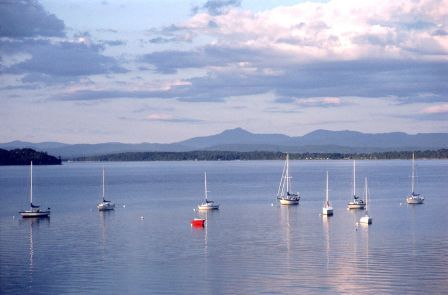Andebit et beaqui corendit, ut quostes esciendion re dit ad et prae parion es quia quas alibus sam, omnim faciden ducipidiat arum autem nobis enis es voat

Lake Champlain

Lake Champlain lies at the heart of Lakes to Locks Passage, “The Great Northeast Journey.” This 133 -mile waterway has carried centuries of travelers through a landscape steeped in history and scenic beauty. New York, Vermont and Quebec share the shoreline which offers broad vistas and access to numerous historic sites in the Lake Champlain Region. Experience a historic perspective of the lake by following the Lake Champlain Paddlers’ Trail or boat to one of the many marinas and lakeshore hamlets. Brochures and maps for Lake Champlain Bikeways and Lake Champlain Walkways help navigate at a slower pace to fully appreciate the layers in this landscape.
Sheets of ice shaped the present contours of the Champlain Valley. Their melting water formed a deep glacial lake that now flows north to the Richelieu and Saint Lawrence Rivers of Quebec. Migrating birds found the passage between the mountains of New York and Vermont a convenient travel route, as did Indians intent on trading tools and furs. Samuel de Champlain gave his name to the lake and claimed the territory for France, but British forces soon challenged that claim. Through three major wars and many minor skirmishes, armies and navies battled back and forth through the Valley. Once the roar of canon subsided, French Canadian and English settlers moved in. Lake Champlain served as their highway to transport farm produce, lumber, iron and stone. Canals at both ends of the lake soon connected Lake Champlain to the world by water.
In the 1800s, railroads and waterways lured tourists eager to see the grandeur of the new country and the places where battles raged. Tourism supported grand hotels and fleets of steamboats. Today’s travelers come by land more often than by water, but they seek the same sites. Thanks to early conservation and preservation efforts, they find an appealing, unspoiled landscape that any 19th- century traveler would recognize.







